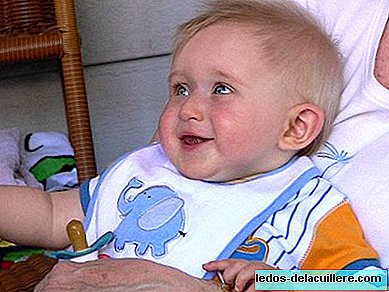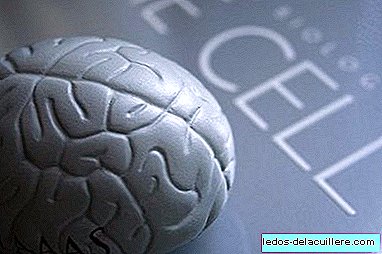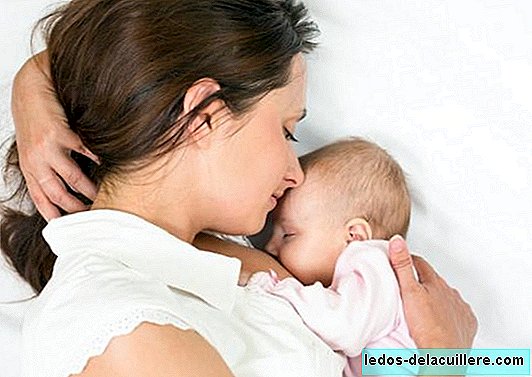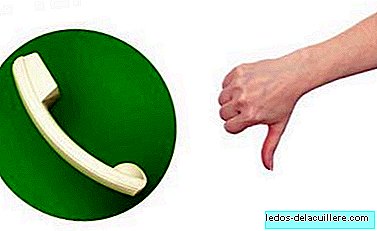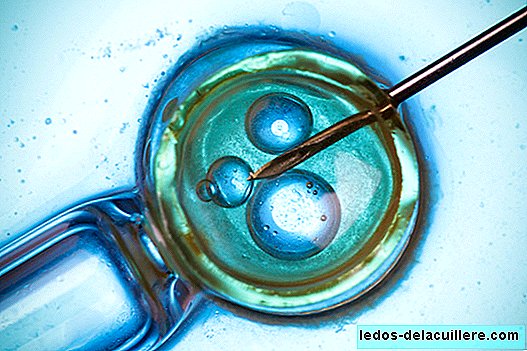
The vision of children develops progressively over time and it will not be until approximately seven or eight years when the vision develops completely. But it is that even inside the uterus, the sight begins to work and the fetus can react to an intense light applied directly to the mother's belly.
The baby at birth does not have its fully developed visual system and in fact sees virtually nothing. It has an immature system that will develop as the cerebral cortex receives appropriate and more or less symmetrical stimuli from both eyes.
From the birth and during the early childhood, qualitative and quantitative changes will be generated in almost all eye structures, more pronounced in the first years of life. That is, many eye characteristics of the newborn and the child are very different from the adult's eye.
Steps in the first year of visual development
The main milestones of visual development in children Over the first twelve months they are:
It distinguishes silhouettes just between 20-30 centimeters and only sees shadows, probably in white, gray and black.
Flashes in bright light (few days after birth).
Try to avoid objects that approach your face (three weeks).
Direct (fixed) contact with the mother (towards 4-6 weeks).
Interest in bright objects and luminous points (towards two months).
Between two and three months he begins to distinguish colors, especially the red one that contrasts with others. The ocular alignment begins to develop, although this will not be fully developed until six months.
At four months he learns to move his eyes regardless of the head, follow the objects that we move in front of them. They perceive more variety of colors. Start focusing better. Recognize more and more faces.
Between the five and six months the eye and hand movements are coordinated, you can take toys ...
Unconjugated eye movements that make them cross their eyes and squint usually disappear around four months, it is a normal phenomenon related to the immaturity of the visual sense, because small babies do not see well from afar and happens when trying to focus.
At six months the baby can fuse the two retinal images of an object obtaining a unique and three-dimensional binocular vision, which means that it could already calculate how far each object is in the environment. If at this age you continue to squint, it is advisable to go to the pediatrician.
The calculation of distances is effective every year and the coordination between the eyes and hands and the body has improved considerably. At this age, skills such as visual memory and visual discrimination have also developed.

Big changes to watch
If we put figures on what the baby sees, we would have more or less than a month his visual capacity with respect to that of an adult is 5%; at two-four months 20%; a year sees 30% -40% of an adult, over 50% at three years ... It won't be until a few years later, over seven-eight years of age, when it reaches 100% capacity.
The so-called "critical period of visual development" occurs between two and three months, so it is important to perform at this age a clinical evaluation of the visual attributes by the pediatrician.
Any alteration that occurs during the maturation period can leave sequels, as permanent visual disabilities. And those alterations can go unnoticed.
Therefore, do not miss the reviews of the child, and if you notice that any of the "milestones" mentioned above are not being fulfilled in your baby, consult the pediatrician. It is important to diagnose and treat these problems in time. That is why we must be attentive to any symptoms that may indicate vision problems.
Definitely, since the baby is in the womb and until the age of seven or eight is developing eyesight in a complex but natural process. The visual capacity of the child is growing gradually and, although many factors will influence so that his sight is perfect or not, the important thing is to be aware of how our child sees to, as far as possible, facilitate that complete development.
Photos | Thinkstock
In Babies and more | Stimulation of the baby begins in the womb, frequent headaches in children: they can be of visual origin, less eye checks, more vision problems in children



